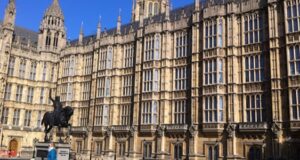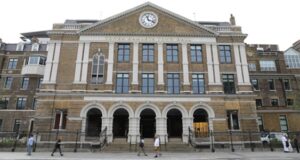 Councillors in London will enjoy an extra three weeks in office this electoral cycle, with the announcement that the 2014 elections will be held on 22nd May 2014 rather than on the first Thursday of that month. The Council elections have been postponed so that they can be held on the same date as elections to the European Parliament. These two ballots will be joined by the second election for Tower Hamlets Mayor, which will be brought into line with the vote for councillors. Electors can therefore expect to receive three ballot papers when they get to the polling station.
Councillors in London will enjoy an extra three weeks in office this electoral cycle, with the announcement that the 2014 elections will be held on 22nd May 2014 rather than on the first Thursday of that month. The Council elections have been postponed so that they can be held on the same date as elections to the European Parliament. These two ballots will be joined by the second election for Tower Hamlets Mayor, which will be brought into line with the vote for councillors. Electors can therefore expect to receive three ballot papers when they get to the polling station.
However, electors will also have to contend with a new geography for the borough. At the moment, the borough is divided up into 17 areas, called wards – and each ward elects three councillors. That is all set to change. The Boundary Commission has re-organised the Borough, reducing the overall number of councillors from 51 to 46 and changing ward boundaries to give those councillors roughly equal numbers of constituents. There will be 20 wards, with three, two or one councillor. There will be some changes to polling stations (where you go to cast your vote) as a result. You can check on how you are affected on http://www.towerhamlets.gov.uk/lgsl/351-400/362_voting/lg_boundary_commission_england.aspx
The Borough is getting ready for elections which are bound to be queried by whoever loses them, or whoever is looking for a hate figure that week, or whichever journalist hasn’t yet got over the grudge they hold against Tower Hamlets. Council staff are therefore already working to make sure procedures are robust and up to scrutiny. Its planning is being shared with the political parties, the Electoral Commission, the Cabinet Office and the police.
The first stage of preparing for next May will be drawing up the electoral register, and canvassers will be visiting homes throughout October and November 2013 to ensure that Voter Registration Forms are returned. The register of electors which will be used in next May’s elections will be published on 17th February 2014: you can inspect a copy at your local library or idea store to ensure that your households’ names are correctly recorded.
It’s a lot for voters to take in – and a lot for the political parties to prepare for too. Labour will be hoping to benefit from the unpopularity of the parties in the Coalition Government and do well in the Euro-elections, and all the mainstream parties will be crossing their fingers and hoping they can push down the vote for right wing extremists (UKIP and the BNP/EDL).
The Tories will put up a strong fight in the south of the borough, hoping to increase the number of councillors they have as population changes have put extra seats in their strongest part of the borough. Labour will be hoping the anti-Coalition momentum will see them sweep the board in the Council elections, but here local factors will come into play. Labour candidates are likely to be chosen by London Labour Party bosses rather than by local members and they will have far more hopefuls to contend with than there are seats available to contest – so there is plenty of scope for more selection mistakes and electoral mishaps.
However, the key battle in Tower Hamlets will be for the position of Mayor of the Borough. In 2010, Tower Hamlets voters had to choose between two candidates both standing on the Labour Party manifesto: the candidate selected by local members, and the candidate who was chosen by national Labour officials. As Labour has refused to investigate its National Executive’s last minute veto over local members’ candidate Lutfur Rahman, the scene is set for another hard fought contest – but perhaps we’ll see some different policies put forward this time!
 East London News A Force for the community…
East London News A Force for the community…



